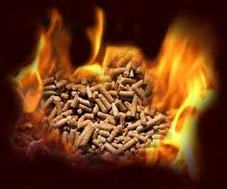Biomass Wood Pellet

Wood pellets is one kind of Bio-Energy or Bio-Fuel. It is known as white coal, is another ideal fuel which substitutes coal, firewood, lignite and other conventional fuel.
Applications
· Industrial use - boilers, furnace & rotary
dryer.
· Power Plant - biomass or conventional.
· Residential and Commercial Heating
Applications
· Industrial use - boilers, furnace & rotary
dryer.
· Power Plant - biomass or conventional.
· Residential and Commercial Heating
Advantage of Wood Pellet
· Less smoke and less CO2 · Low moisture content · Low dust and impurities content · Environment friendly products · Ease of transportation and storage |
Features of Wood Pellet
¨ Low cost advantage ¨ Excellent year-around availability ¨ No species variation ¨ Free of chemical addictive ¨ Low ash content |


